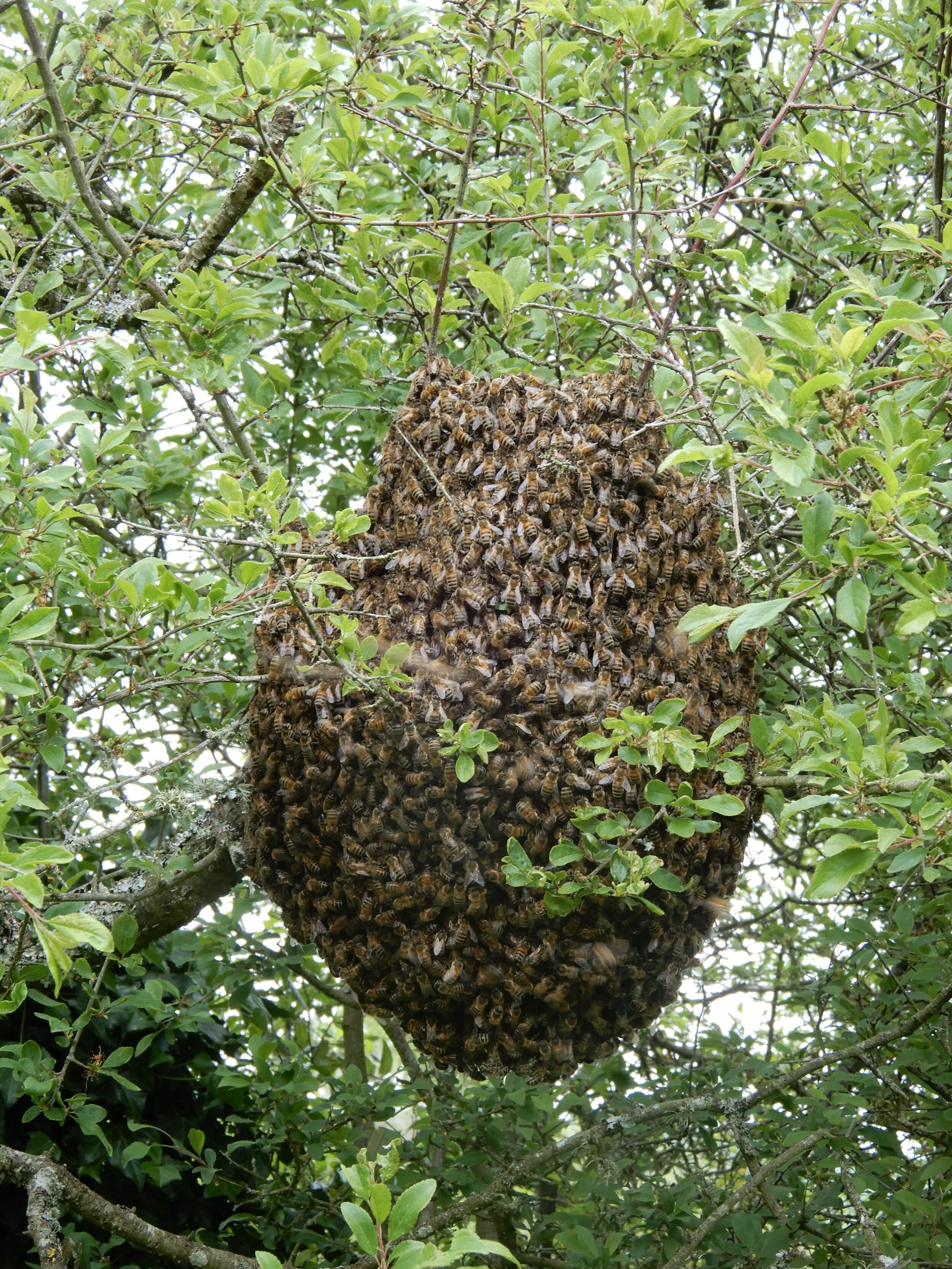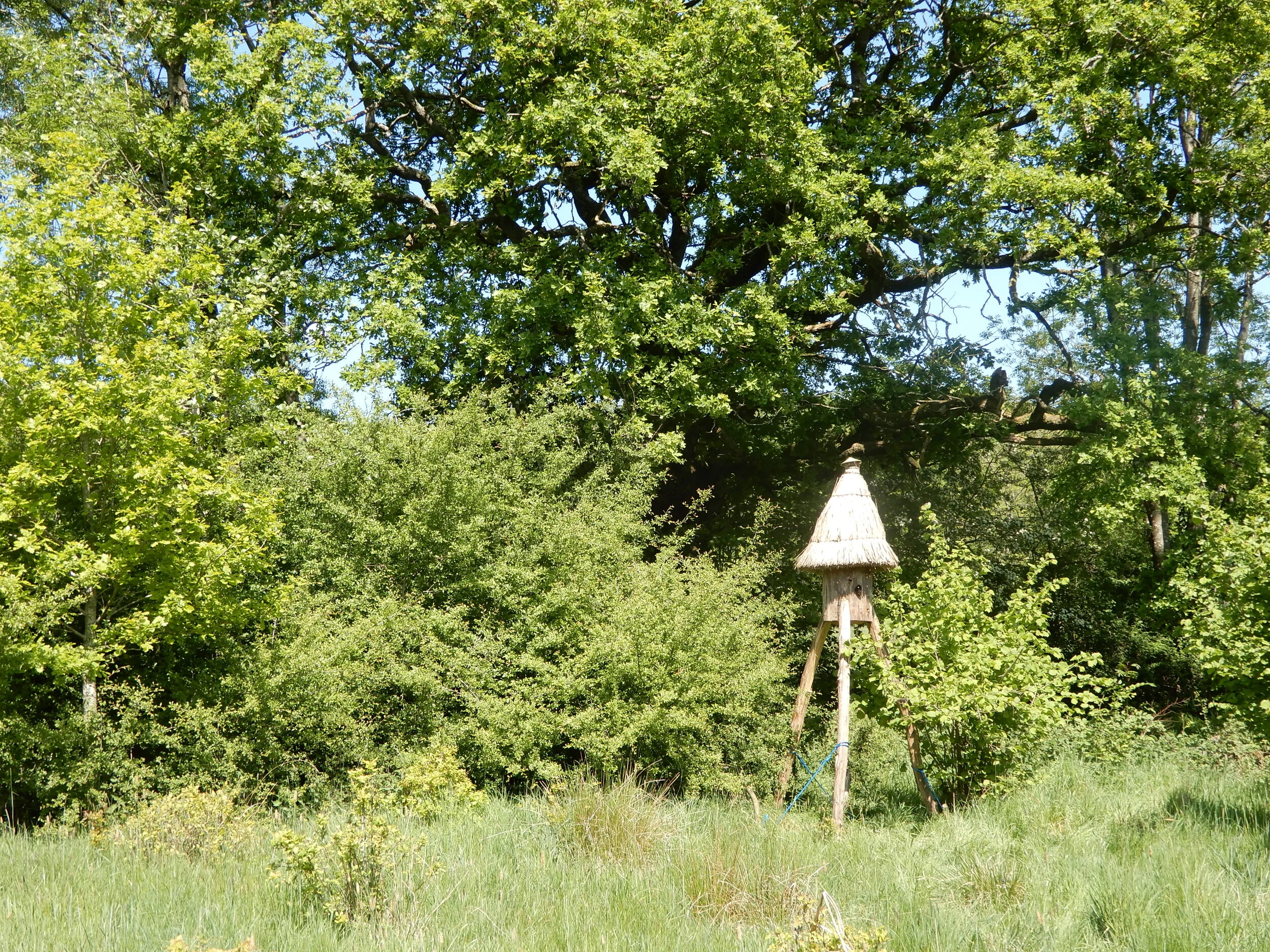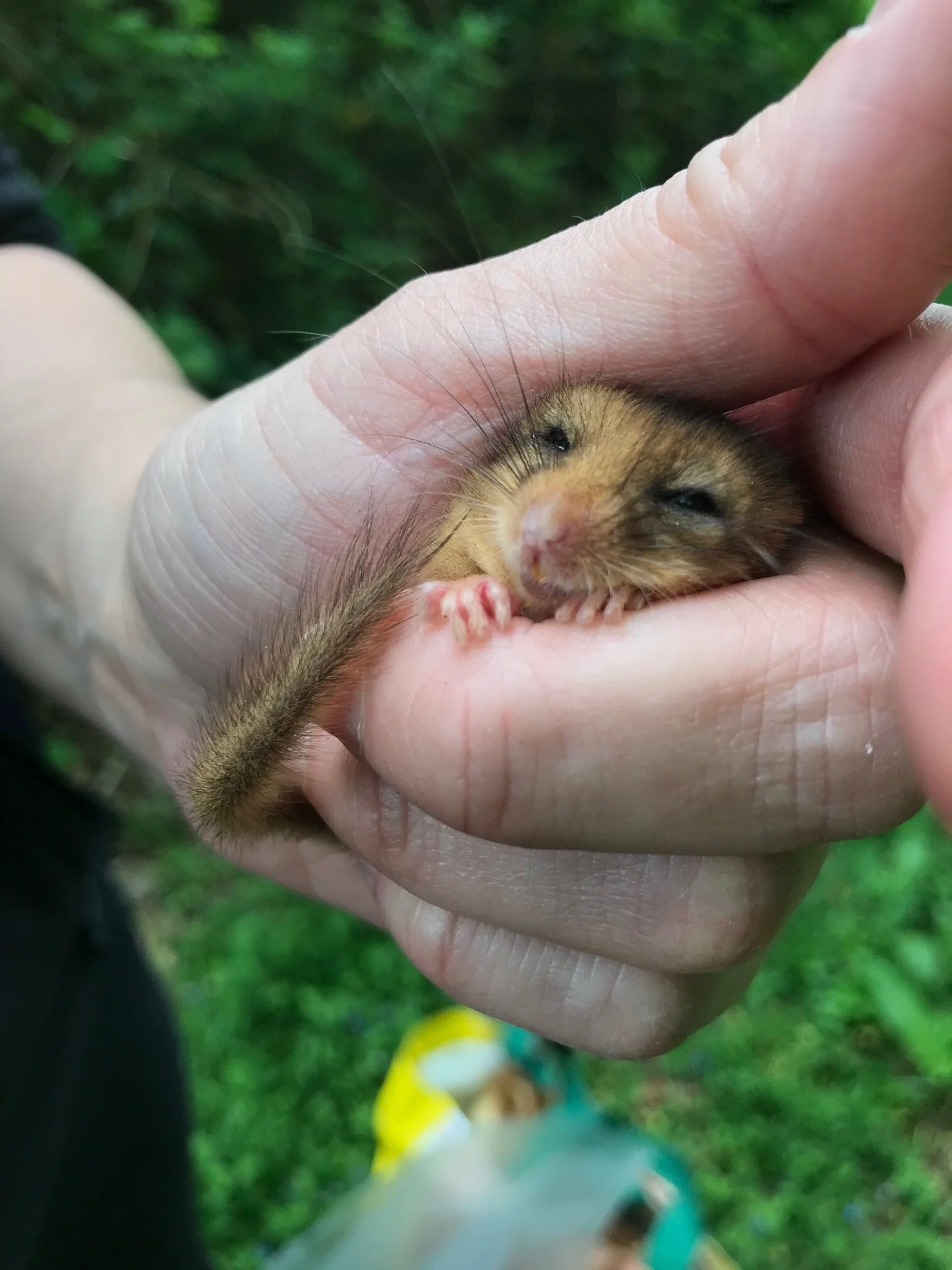Last spring, I spent a number of pretty stressful days trying to coax a cluster of honeybees into a new log (freedom) hive. This all before a severe frost, which would have surely killed them all, struck. Keggie and good mate Chris Nicholson, helped out. I wrote a blog at the time:
So when I arrived at UWNR on April 29th and found another swarm in the same tree, I felt all at once elated and really anxious. What if…what if…what if. The forecast for April 30th was dire - a deep Atlantic low, with a reading of 995 millibars was due to slam into the UK and hit southern England hardest. It did just that - dumping 46 millimeters of rain over a 36 hour period. At times, hail was added to that mix and just for good measure, 40 mph wind gusts.
After the storm had abated, I returned to UWNR and remarkably found this, in a hedge 100 meters from the tree it had originally been in. How had it survived a 36-hour beating of such magnitude, was truly mind-blowing.
And there it sat for the next 3 days, scouts flying out from the cluster in a desperate hunt for suitable sites to colonise.
On the 3rd day Matt Somerville (who knows everything there is to know about honeybees) visited, and on his advice we decided to move the log hive. Matt had an uneasy feeling about its location - too windy, overly shaded & cold. The move worked a treat - on my next work visit to UWNR, I found this abandoned comb in the hedge, and a band of busy honeybees orienting themselves around their new home….oh my god the relief!
Matt makes a poignant and interesting point about the abandoned comb. It indicates that wild honeybees cannot find suitable sites to create new colonies in. Another indicator that our environment is degraded.
Two examples spring to mind. Locally, incomers with limited / no ecological knowledge, contracted negligent tree surgeons who cut down a beautiful veteran Chestnut tree in Wardour (Dorset), not too many years ago. This act of vandalism, robbed this landscape of a wild honeybee site. At a national level, the HS2 project is clear-felling many ancient woodlands, again with the loss of sites. We are duped into believing that replacement, replanting programs will suffice - this is a lie.
The log hive re-sited, in decent sun and sufficient shelter from cold northerly and easterly winds……
AND JUST YESTERDAY THIS HAPPENED!
Good UWNR friends and brilliant ecologists Gareth Harris & Lisa Wade sent me this pic from UWNR - they had gone there for the day to inspect boxes and tubes, which are deployed at the land. For the 3rd year in a row we have confirmed Dormice at the Reserve. This is a huge deal – this rare mammal is a key indicator species i.e. indicating health of habitat at UWNR.
Thanks Lisa and Gareth. And thank you too Jan Freeborn, who first suggested that we monitor for this species.
And I have to add Gareth & Lisa’s wonderful list, from their day at UWNR….
2 dormice - tube 9.
Plus a wood mouse/yellow-necked mouse nest, and a yellow-necked mouse (likely pregnant female) - box 3.
Nests:
Box 5 (great tit, on eggs), Box 1 (blue tit on eggs), Box 4 (great tit on chicks), Box 8 (tit nest with chicks), possible wren nest in Box 10, possible woodmouse nest in Box 9 (couldn’t find boxes 7, 8 and 11, buried in deep!)
Butterflies – Small Copper was the star (pic below) plus peacock, holly blue, speckled wood, orange tip. Damselflies on/near pond – Azure (inc pair in cop and egg-laying), large red, common blue and blue-tailed damselfly.
Largish grass snake under one of the tins near the pond.
On the pond were singing Little Grebe, pair of Moorhen and two male Mallard.
Singing in the scrub/trees and hedgerows – blackcap, bullfinch, chiffchaff, Mistle thrush, song thrush, robin, blackbird, dunnock, wren…….
Nice to see lots of flowering red and white campion, yellow archangel, primrose etc.
Forgot to investigate the bee hive on legs BUT there was a swarm on the hive high in the oak tree near the education centre / barn owl boxes.
Small Copper




